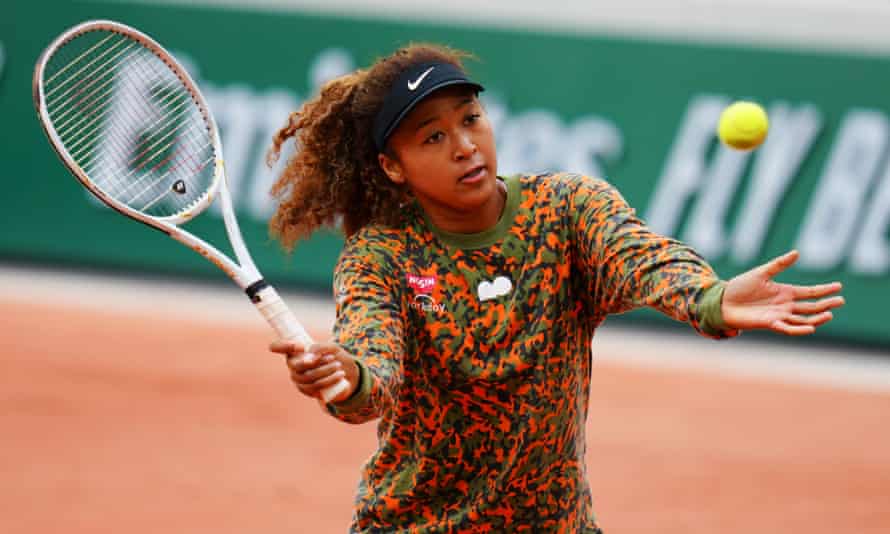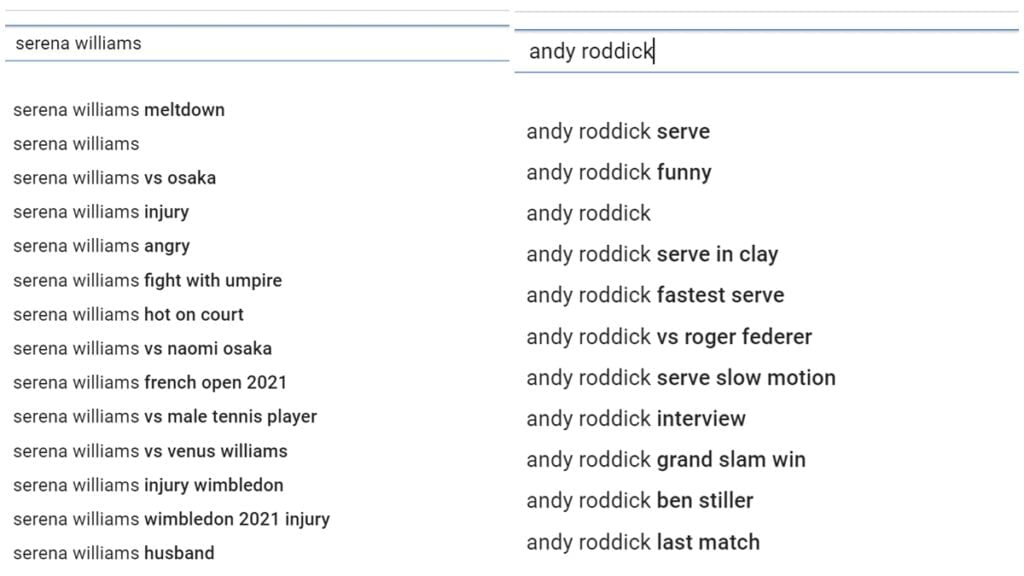In June 2021, world number two in women’s Tennis, Naomi Osaka, withdrew from the French Open tournament, Roland Garros, citing mental health concerns. The decision came in the wake of a joint statement issued by the organisers of the four Grand Slam tournaments — Australian, French and United States Open, and Wimbledon — that “advised” Osaka, should she continue to ignore her media obligations, stricter code of conduct infringement consequences and harsher fines would be levied in future tournaments.
On her part, the 23-year-old four-time Grand Slam champion had not participated in a post-match news conference owing to anxiety and nervousness, and the compulsion to speak in public made it far worse. This costed Osaka $15,000 in fine. Since then, the Women’s Tennis Association Tour clarified its position: mental health is of “utmost importance” [but] “[p]rofessional athletes have a responsibility to their sport and their fans to speak to media surrounding their competition, allowing them the opportunity to share their perspective and tell their stories.”
Also read: Naomi Osaka: Underlining That Every Athlete Is Only Human
On her part, the 23-year-old four-time Grand Slam champion had not participated in a post-match news conference owing to anxiety and nervousness, and the compulsion to speak in public made it far worse. This costed Osaka $15,000 in fine.
While appearing committed to players’ wellbeing, how do sports authorities propose a change?

Clearly, the opinion on media coverage of players doesn’t seem to have changed much. In this BBC article carrying statements by only white fellow players on Osaka’s post-match absence, all seemed to suggest that speaking to media is part of being a sportsperson and while they respected Osaka’s decision, they did not mind the media coverage having ‘learnt’ how to deal with it. Commenting on Osaka’s decision to withdraw, Ashleigh Barty, the women’s number one said, “Press is kind of part of the job. We know what we sign up for as professional tennis players,” and 13-time French Open men’s champion, Rafael Nadal, the king of clay court, said, “I understand her. But, on the other hand, I have my point of view that the media is a very important part of our sport, too.” For Britain’s number one, Johanna Konta, media questions are tricky, requiring a balancing act.
In theory too, the tennis fraternity’s expectation appears to be that players should keep aside their anger to communicate their passion during as well as right after the game — immediately or within 30 minutes after the conclusion of the match. Overlooked in this contrasting expectation of raw yet cultivated manifestation of emotions, particularly anger in media coverage, is the nature of scrutiny that certain players have to deal with. Mark Knight’s cartoon depicting Serena Williams as a ‘tantrum throwing’ player and his defense in Herald Sun and on Twitter that “it had nothing to do with gender or race” is a case in point.
Moreover, eruption of anger and anxiety, and feelings of fear and uncertainty on tennis court cannot be isolated from emotions that have accumulated over the years. The federation associates, organisers, opponents, umpires, crowd, clothes, and even the type of tennis court — clay, grass and hard — in successive matches play a key role in molding these emotions.
Female tennis players have often been selectively picked for not following the rule book. In 2018 US Open, French player, Alize Cornet, was given a penalty for changing her shirt on court in violation of the ‘Grand Slam rule book,’ which allegedly stated that “women should only change their attire in a break between sets in the nearest available bathroom.” The warning came from the chair umpire who found it to be an “unsportsmanlike conduct.” However, similar warnings have not been issued for male legacy players such as Novak Djokovic and Rafael Nadal who have on several occasions changed their shirts on tennis court.
In the case of The Championships, the oldest and most prestigious tournaments held in Wimbledon, Britain, strict dress codes dates back to 1877 when sweat spots visible in coloured clothes, according to Meredith Richards, the librarian at the International Tennis Hall of Fame, were thought to be improper. Tennis, after all, was played in elite social gatherings. Having originated in 12th century France; later adopted by European royalty; converted to lawn tennis in Great Britain; and entered State Island New York in 1870s, tennis symbolised upper-class lifestyle and etiquette.
While the US Open eventually loosened some rules, Wimbledon continued its orthodoxy, even including stipulations like banning coloured undergarments that may become visible through clothes during perspiration. The common standards of decency associated with everything white meant that in 2013, Rodger Federer dressed in white shorts, white shirt, white bandana, and white socks was banned from wearing orange-soled (white) shoes because they were simply “too much.” Still, Federer’s character in the eyes of sports authorities remained intact. The same courtesy was not extended to American tennis player Gussie Moran whose white lace-trimmed boomer beneath her skirt in 1949 championship outraged the All England Tennis Club that accused her of “bringing vulgarity and sin into tennis.”
The prolonged subjection of body to disciplinary standards in Serena’s case incites many. In 2018, the French Open announced a ban on the ‘black panther’ suit that then 36-year-old Serena Williams wore owing to her post-pregnancy complications involving blood clots. In Miami in 2003, Russian player Maria Sharapova — known for ‘balancing’ her aggression and beauty with ‘grace’, with former president Donald Trump once saying that Williams was “intimidated” of Sharapova’s “supermodel looks” — said that Serena’s “physical appearance is much stronger and bigger than you realize watching TV. She has thick arms and thick legs and is so intimidating and strong. And tall, really tall.”
The irony wasn’t lost on those who knew that Sharapova is 6’2 whereas Serena is 5’9 — surely, the comment couldn’t have been a mere objective description of Serena’s body. Yet Serena’s emotions on court continue to upset those who have held tennis to high standards in contrast with how team sports such as football and cricket are perceived and perhaps also in defiance of its own reality.
If anything, tennis has been an ‘aggressive’ sport: racket breaking happens during moments of high tension; in state-level matches in India at least, where I played, players who shook hands and patted each other on the back after game — showcasing ‘sportsmanship’ — sometimes simultaneously abused their opponents in ears with a plastered smile; referees can be biased and often make wrong judgements, but the misplaced expectation remains about ‘what-tennis-stands-for.’
Also read: Serena Williams Vs Carlos Ramos: Why Are Emotions So Gendered?
Indulgence in subtle policing of players such as Serena Williams for not being as calm, composed and level-headed as the Swiss tennis star, Rodger Federer, is far too common.
And for those fans who are singularly obsessed with a white male player more so than the sport, for whom political struggles should be kept outside the profanity of the game, indulgence in subtle policing of players such as Serena Williams for not being as calm, composed and level-headed as the Swiss tennis star, Rodger Federer, is far too common. Funnily, never comparing Serena to American player, Andy Roddick, whose anger and racket breaking incident in 2008 Australian Open has been described as one of the biggest tennis meltdowns. [Also read about John McEnroe’s (mis)conduct in 1990s]
Given below is a comparison of the YouTube results one gets when searching for Serena Williams and Andy Roddick, which sends the point home.

Whether Osaka’s withdrawal will lead to a change depends on the willingness of those in power to reflect and acknowledge the dubious rule book by which they play. Otherwise, the “utmost support” by tennis authority will risk being a mere mitigation response to an anticipated public outcry. It will be a difficult task because bureaucratic authority enforces rules as a way of re-establishing its importance and paternal supremacy. For instance, French Tennis Federation (FFT) president Gilles Moretton condemned Osaka’s action and demanded stricter adherence to rule: “It shows to what extent today [the need] there is [for] strong governance in tennis… We will stick to the laws and rules for penalties and fines.”
But bureaucracy dressed up in the language of rules and regulations has little do to with the rule of law, cautions anthropologist David Graeber. When 23-times Grand Slam Champion Serena had lost to the 20-year old Naomi in the US Open finals 2018 — a legendary win for Osaka also because of the hierarchy and imbalance of power between the players — it was presumed that Serena was ‘crying foul because she lost.’ When media was called out for being sexist and racist in its reporting, the narrative took a moral high ground, fearing possibilities of coming across as racist (rather than not being one.) stories projected African-American Serena as well as her fans as bullies who booed the umpire thereby robbing Japanese-Haitian Naomi off her victorious moment. The strict umpire was merely following the rules by giving a game penalty (3-5!)
The media’s coverage of Serena Williams Losing to Naomi Osaka in 2018 was not just problematic in pitting two non-white players against each other but was also dismissive of past struggles of Serena who — no stranger to crowd booing, and performance anxiety on court, notably in a 2003 match where she played Belgian Justine Henin-Hardenne — comforted an overwhelmed Osaka after her win.
Roddick had, in fact, spoken about umpire prejudice in 2018 by confessing that “he’d done worse, but unlike Williams, never gotten a game penalty.” But media’s coverage of the incident was not just problematic in pitting two non-white players against each other but also dismissive of past struggles of Serena who — no stranger to crowd booing, and performance anxiety on court, notably in a 2003 match where she played Belgian Justine Henin-Hardenne — comforted an overwhelmed Osaka after her win.
Although it will be difficult to bracket Osaka’s withdrawal as attention seeking or crying foul following her straight sets win over Romania’s Patricia Maria Tig in her first match in the French Open this year, some of the biases of 2018 overshadowed by attempts to call it Williams vs. Osaka have resurfaced. Piers Morgan, for instance, accused Osaka of being a “brat” who has “got what she wanted – no more criticism only praise. Meanwhile all her fellow tennis professionals will continue to fulfil their contractual obligations to the media & get criticism when they deserved.” Post condemnation of his statements on social media he put up a picture with Serena Williams to show his love for female black tennis stars little realising that the language of racism and sexism is too layered to be saved by such shenanigans. [note: even the support for Osaka has failed to look into racial and gender biases in sport bureaucracy and media obligations.]
Still, whatever the outcome of the withdrawal on mental health, Naomi Osaka has ensured that more people talk about the incident, which — and she’d agree on this — would be a great start. In three decades, 23 players have been fined for not meeting press obligations, none a memorable occurrence. Unlike most of Osaka’s contemporaries who have done very little for race and gender justice through their game, Osaka has managed to show solidarity with Black Lives Matter on court and condemned the brutal killings of African-American people by U.S. Police. The frequency of such political statements has certainly increased in the sport over the last few years, but it unfairly weighs on those with a moral compass to dismantle oppressive systems. Unfortunately, this uneven workload too has a bearing on emotions running high in the game.
Saumya Pandey is a PhD student. You can find her on Twitter.
Featured image source: TIME




